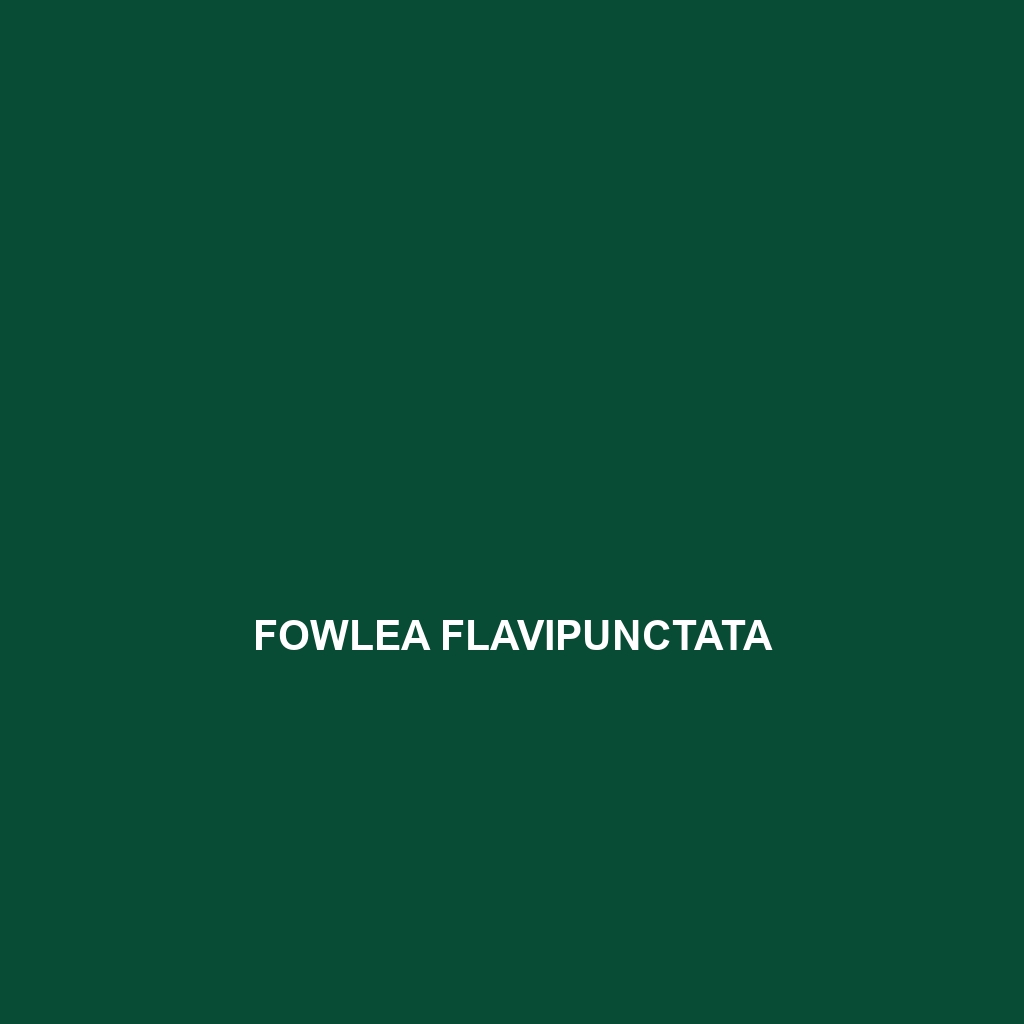Common Name
Fowlea flavipunctata
Scientific Name
Fowlea flavipunctata
Habitat
Fowlea flavipunctata, commonly known as the yellow-spotted keelback, is primarily found in the lush and vibrant habitats of Southeast Asia. This species is predominantly located in tropical rainforests, where the dense canopy provides essential cover and a rich environment for hunting and breeding. The yellow-spotted keelback thrives in a variety of climates, demonstrating a notable adaptability to wet rainforests and humid savannas. Additionally, it is often found near freshwater sources such as rivers and swamps, which are critical for its survival as they offer abundant prey and suitable environmental conditions. The presence of diverse flora and a relatively stable temperature throughout the year characterizes its preferred habitats, making these environments vital for its population’s health.
Physical Characteristics
The yellow-spotted keelback is a medium-sized snake, generally reaching lengths of approximately 1 to 1.5 meters. Its distinctive feature is its vibrant coloration; the body is predominantly brown to olive-green with striking yellow to orange spots along the sides, providing excellent camouflage among the leaf litter and foliage of its rainforest home. The scale patterns are smooth and glossy, enhancing its hydrodynamic abilities in aquatic environments. The shape of Fowlea flavipunctata is sleek and elongated, allowing for efficient movement through both terrestrial and aquatic habitats. Its head is slightly wider than its neck, with large, expressive eyes that offer excellent vision in low-light conditions, making it adept at spotting potential prey.
Behavior
Known for its elusive nature, Fowlea flavipunctata exhibits both diurnal and nocturnal behaviors, making it a versatile predator. These snakes are primarily terrestrial but are also skilled climbers and swimmers. They often display solitary behavior, although they may be seen basking together during warmer months. Mating rituals typically occur during the rainy season, when males engage in intricate courtship displays that include body undulations and tail flicking to attract females. Although generally quiet, these snakes may produce hissing sounds when threatened, striking an impressive pose to deter predators. Their keen sense of smell allows them to locate prey and communicate with potential mates effectively.
Diet
Fowlea flavipunctata is a carnivorous species that primarily feeds on a diet of small mammals, amphibians, and fish. They exhibit ambush tactics, lying in wait for unsuspecting prey to venture close before launching a rapid strike. The yellow-spotted keelback’s diet also includes various invertebrates, making it an opportunistic feeder. This adaptability in feeding habits allows it to thrive in diverse habitats where food availability can fluctuate seasonally. Their ability to hunt both on land and in water further cements their role as effective predators within their ecological niche.
Reproduction
The reproductive cycle of Fowlea flavipunctata commences with courtship in the rainy season, typically from March to June. After successful mating, females lay clutches ranging from 5 to 15 eggs in hidden, moist environments to ensure optimal conditions for incubation. The gestation period lasts about 60 days, after which the young emerge fully formed, ready to fend for themselves. Parental care is minimal once the eggs are laid. The hatchlings are about 25 cm long at birth and exhibit similar patterns to adult snakes, indicating their readiness to adapt to the wild. This effective reproductive strategy helps maintain population numbers, even in the face of environmental challenges.
Conservation Status
According to the International Union for Conservation of Nature (IUCN), Fowlea flavipunctata is currently classified as ‘Least Concern.’ However, the species faces several threats, including habitat destruction due to logging, agricultural expansion, and pollution in freshwater ecosystems. Conservation efforts are essential to monitor and protect its habitats. Local initiatives aimed at preserving wetlands and forests are critical to ensuring the survival of this species in the wild. Continued research and awareness are necessary to mitigate potential declines in population numbers due to environmental changes.
Interesting Facts
One fascinating aspect of Fowlea flavipunctata is its capacity for mimicry; it can closely resemble the venomous species, which aids in predator deterrence. Additionally, its remarkable swimming skills allow it to chase down fish and evade larger predators in aquatic settings. Interestingly, these snakes have been observed using their color patterns to blend into their surroundings more effectively, a trait that significantly enhances their hunting success and aids in evading threats.
Role in Ecosystem
Fowlea flavipunctata plays a crucial role in its ecosystem as both a predator and prey. By controlling populations of small mammals and amphibians, it helps to maintain a balanced food web. Furthermore, as they themselves fall prey to larger predators, they contribute to the biodiversity and nutritional dynamics of their habitat. This species may also act as a natural pest controller, helping to keep insect populations in check. As such, Fowlea flavipunctata is an important component of its ecological community, ensuring the overall health and stability of its environment.
